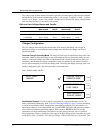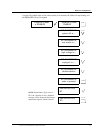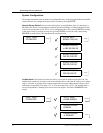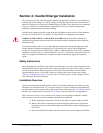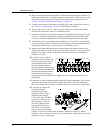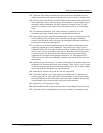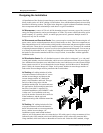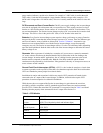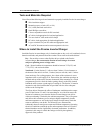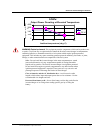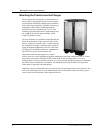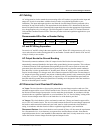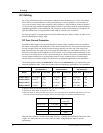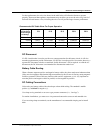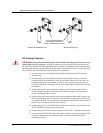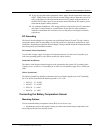
Tools and Materials Required
42 Prosine Installation & Operation Guide
Tools and Materials Required
You will need the following tools and materials to properly install the Prosine inverter/charger:
❐
❐❐
❐
Wire insulation stripper
❐
❐❐
❐
Mounting screws or bolts (#12 or #14)
❐
❐❐
❐
#2 (¼-inch) flat blade screwdriver
❐
❐❐
❐
Small Phillips screwdriver
❐
❐❐
❐
17mm or adjustable wrench for DC terminals
❐
❐❐
❐
AC cable sized appropriate for load and application
❐
❐❐
❐
Two one-inch AC cable strain-relief clamps
❐
❐❐
❐
DC cable, sized appropriate for load and application
❐
❐❐
❐
Lugs or terminals for your DC cables and appropriate tools
❐
❐❐
❐
AC and DC disconnects and overcurrent protective devices
Where to Install the Prosine Inverter/Charger
Install the Prosine inverter/charger only in locations that are dry, cool, well ventilated, close to
batteries and loads, and protected from the weather. These terms are described below:
Dry—Do not allow water or other fluids to drip or splash on the Prosine
inverter/charger. Do not mount the Prosine inverter/charger in an area
subject to splashing water or bilge water.
Cool—Normal ambient air temperature should be between 32°F (0°C) and
77°F (25°C)—the cooler the better.
Ventil ated—For the Prosine 2.5, allow at least 5 inches (13cm) clearance at
the bottom of the unit for air flow, 3 inches (8cm) on each side, and 1.5 inches
(4cm) at the top. For cooling purposes, the volume of the enclosure is not as
important as the overall supply of air. Do not allow the ventilation openings on
the back and top of the unit to become obstructed. When mounting in a closed
compartment, provide a fresh-air intake opening directly to the fans (located
behind the unit) to assure a good supply of cooling air. The Prosine 3.0 must be
mounted on top of the brackets that are provided with it to allow adequate
airflow to the cooling fans.
The figure below illustrates the effect of inadequate ventilation on the output
power of the Prosine 2.5 and 3.0 inverter/chargers. As with all inverters, the
amount of continuous power that the Prosine inverter/chargers can deliver
without overheating is limited by the ambient temperature. They will operate
and deliver their continuous power ratings at higher temperatures, but the
ambient temperature as well as the input voltage from the battery limits the
extent to which they can do this. The following curve illustrates the
relationship between rated power output and ambient temperature. Operating
the unit in conditions outside the power and temperature limits will result in
thermal shutdown and/or significantly decreased performance. In addition,
operation in this range is outside the ratings covered by the regulatory
approvals of the products.



